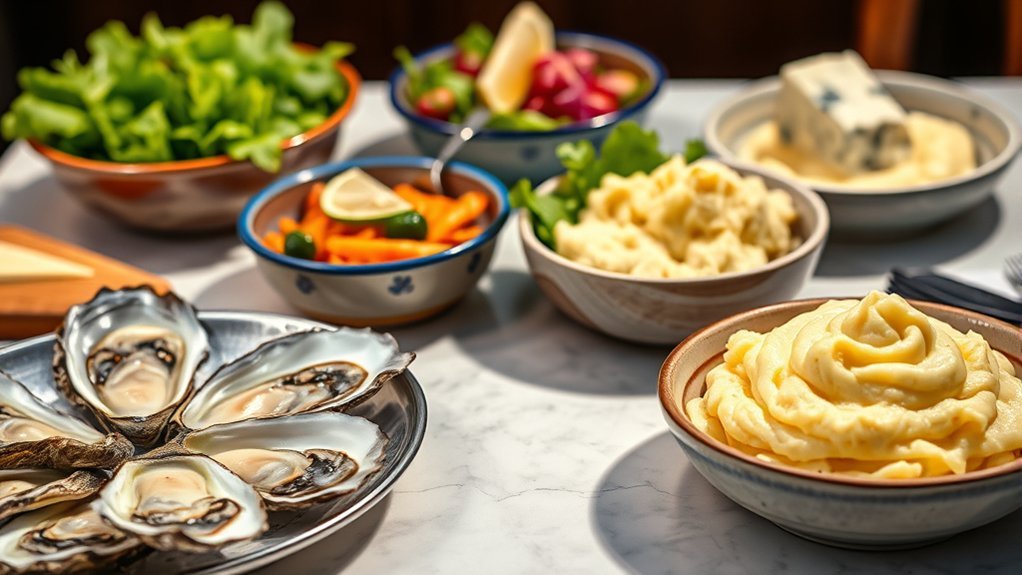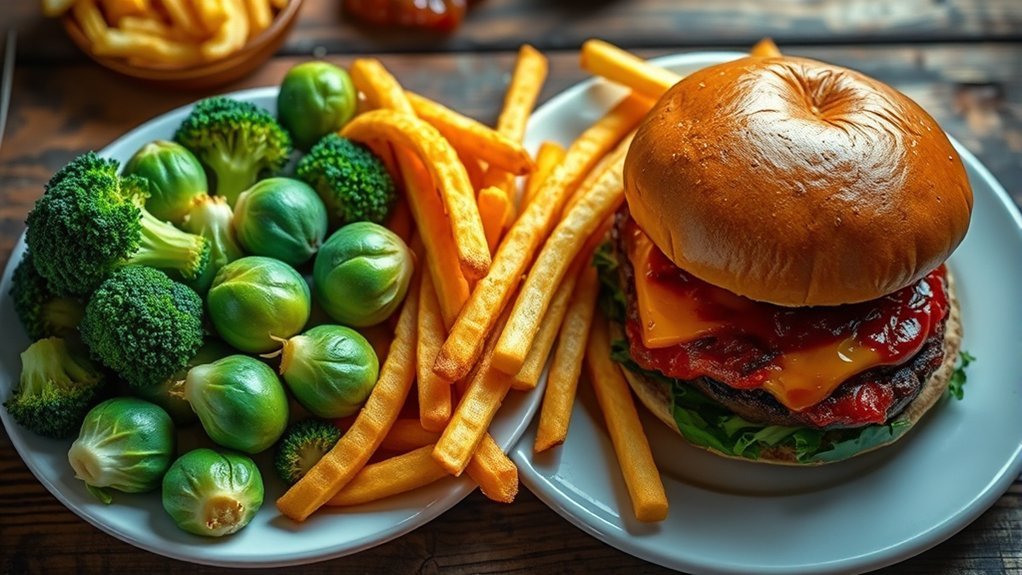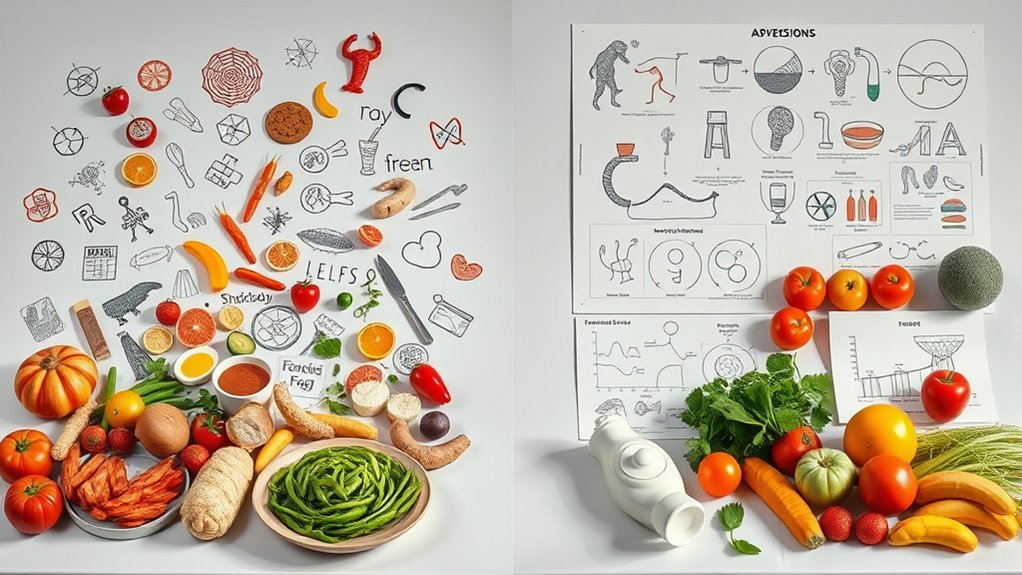Food aversions can be complex and often misunderstood. Many believe they’re just a sign of being picky, but there’s more beneath the surface. Factors like past experiences, allergies, and even cultural influences play significant roles. It’s essential to differentiate between genuine aversions and simple preferences. Understanding these distinctions can help you navigate your own or others’ dietary challenges. But what happens when these aversions become problematic?
Understanding Food Aversions

When you experience food aversions, it’s important to understand that these reactions can stem from various factors, including psychological, physiological, and cultural influences.
Psychological factors often include past negative experiences with certain foods, leading to an avoidance response. Physiologically, your body might react to specific ingredients, triggering nausea or discomfort.
Cultural influences can shape your food preferences and aversions, as societal norms dictate what’s considered acceptable or desirable. Additionally, genetics may play a role in your taste sensitivity, affecting your reaction to certain flavors.
Common Myths About Food Aversions

Food aversions are often surrounded by misconceptions that can mislead individuals about their eating habits. One common myth is that food aversions are merely a sign of picky eating, but they often stem from deeper physiological responses. Another myth suggests that if you dislike a food one time, you’ll always hate it, when in fact preferences can change over time. Finally, some believe that food aversions are always psychological, ignoring the role of physical reactions like allergies or intolerances.
| Myth | Fact | Impact on Eating Habits |
|---|---|---|
| Food aversions are just picky eating | They can be physiological or psychological | They can limit food choices |
| Disliking a food is permanent | Preferences can change | You might re-try foods later |
| Food aversions are always psychological | They can also be due to allergies | Understanding aversions aids in nutrition |
The Psychological Factors Behind Food Aversions

Although many people associate food aversions solely with taste preferences, psychological factors often play a significant role in their development. Your past experiences can shape your reactions to certain foods. For instance, if you’ve had a negative experience, like food poisoning, you might develop an aversion to that specific food due to conditioned responses.
Additionally, cultural influences and social environments can impact your perceptions of food. If you associate a food with a stressful event or a negative emotion, it’s likely you’ll avoid it.
Moreover, anxiety and mood disorders can exacerbate food aversions, making you more sensitive to specific tastes or smells. Understanding these psychological factors can help you address and possibly overcome food aversions more effectively.
Physiological Influences on Food Preferences
While psychological factors often dominate discussions about food aversions, physiological influences are equally essential in shaping your food preferences. Your body’s sensory systems, including taste and smell, play a critical role in determining what you enjoy or dislike.
Genetic variations can affect how you perceive flavors; for instance, some people are more sensitive to bitter tastes, which may lead to aversions to certain vegetables. Additionally, your body’s nutritional needs can influence cravings. For example, if you’re low on iron, you might develop a preference for iron-rich foods like red meat.
Hormonal changes, such as those during pregnancy, can also alter your taste preferences, making you more sensitive to specific flavors or scents, further shaping your food choices.
Cultural Impact on Food Aversions
Cultural backgrounds markedly shape your food aversions, as societal norms and traditions dictate what’s considered acceptable or desirable to eat. For instance, in some cultures, insects are a delicacy, while in others, they’re viewed with disgust.
These cultural perceptions influence your willingness to try new foods and can even lead to strong aversions based on what you’ve been taught or exposed to. Research indicates that food preferences often develop alongside cultural identity, making it essential to understand that your aversions aren’t purely personal—they reflect a broader societal context.
Additionally, peer influence and family traditions further reinforce these aversions, emphasizing the powerful role culture plays in shaping your culinary experiences and attitudes toward different foods.
The Role of Childhood Experiences
Your early taste preferences are often shaped by the foods you were exposed to as a child.
Parental influence plays a significant role in developing your aversions and likes, as the choices they make can either encourage or discourage certain foods.
Understanding these childhood experiences can help explain why you may have strong reactions to specific flavors or textures today.
Early Taste Preferences
Childhood experiences greatly shape early taste preferences, influencing what foods children enjoy or reject later in life. Your early encounters with food can create lasting impressions.
For example, if you’d positive experiences during mealtime, you’re more likely to embrace a variety of flavors. Conversely, negative associations can lead to food aversions.
- Enjoying a family meal can foster a love for diverse cuisines.
- A traumatic experience, like choking, might instill fear toward specific textures.
- Repeated exposure to certain foods can either encourage acceptance or reinforce rejection.
Understanding these influences helps you recognize why you gravitate toward or shy away from certain foods as an adult. Your palate is shaped not just by biology, but by the rich tapestry of your childhood experiences.
Parental Influence Effects
While family dynamics play an essential role in shaping food preferences, parents often serve as the primary influencers of their children’s eating habits.
Research shows that children are more likely to adopt food preferences modeled by their parents. If you frequently eat fruits and vegetables, your child is likely to follow suit. Conversely, if you express aversions to certain foods, your child may develop similar dislikes.
Emotional connections also matter; if meals are enjoyable, children are more inclined to try new foods. Encouraging variety and maintaining a positive eating environment can foster openness to different flavors.
Consequently, your approach to food not only affects your child’s immediate choices but can also shape their long-term eating behaviors.
Food Aversions vs. Picky Eating
Understanding the difference between food aversions and picky eating is essential for addressing dietary challenges effectively. While both can lead to limited food choices, they stem from different causes. Food aversions often arise from negative experiences or sensory sensitivities, whereas picky eating can be a behavioral choice or preference.
Consider these emotional impacts:
- Feeling isolated during social meals due to food aversions.
- Frustration when family members don’t understand your food preferences.
- Anxiety when faced with new or unfamiliar foods.
Recognizing whether you’re experiencing a food aversion or simply being picky can help you seek the right support and strategies.
When Food Aversions Become a Problem
Food aversions can become problematic when they greatly impact your nutritional intake or social interactions.
When you consistently avoid certain foods, you may miss essential nutrients, leading to deficiencies that affect your overall health. For example, avoiding fruits and vegetables can result in inadequate fiber, vitamins, and minerals.
Additionally, food aversions can strain relationships during shared meals, making social gatherings uncomfortable. You might feel isolated if your aversions prevent you from participating in communal dining experiences.
Research shows that severe food aversions can lead to anxiety or stress, particularly in social settings. Recognizing when a food aversion begins to affect your life is vital in addressing potential health and social challenges.
Strategies to Manage Food Aversions
To effectively manage food aversions, you can use several strategies that promote gradual adaptation.
Gradual exposure techniques, mindful eating practices, and exploring nutritional substitutes can help you expand your dietary options and reduce anxiety around certain foods.
Gradual Exposure Techniques
While confronting food aversions can feel intimidating, employing gradual exposure techniques can greatly ease the process.
These strategies allow you to slowly introduce the aversive food into your diet, reducing anxiety and increasing acceptance over time. Start with small, manageable steps and gradually increase exposure.
- Begin with small bites: Just a taste can profoundly reduce fear.
- Pair with familiar foods: Mixing the aversive food with something you enjoy can make it more palatable.
- Set realistic goals: Celebrate small victories to encourage progress and build confidence.
Research shows that gradual exposure can effectively diminish aversions, leading to a more varied and balanced diet.
Mindful Eating Practices
Building on the idea of gradual exposure, incorporating mindful eating practices can further help manage food aversions. By focusing on your eating experience, you create a supportive environment that encourages acceptance.
Start by eliminating distractions—turn off screens and sit down at a table. Pay attention to the colors, textures, and aromas of your food, which can enhance your sensory experience. Chew slowly and savor each bite, allowing your brain to register the flavors and sensations. This heightened awareness can reduce anxiety connected to specific foods.
Additionally, reflecting on your feelings toward food before and after meals can provide valuable insights into your aversions. Mindful eating fosters a more positive relationship with food, making it easier to gradually overcome aversions.
Nutritional Substitutes Options
Several effective nutritional substitutes can help you manage food aversions while still meeting your dietary needs. By opting for alternatives, you can enjoy meals without compromising nutrition.
Consider these options:
- Plant-based proteins like lentils or chickpeas can replace meat, providing essential nutrients without the aversion.
- Cauliflower rice serves as a great substitute for traditional rice, offering similar texture with fewer carbs.
- Nut butters can replace dairy in recipes, delivering healthy fats and protein while avoiding lactose.
These substitutes not only maintain your nutritional balance but also allow you to explore new flavors.
Embracing alternatives can transform your meals, making them enjoyable and satisfying despite food aversions.
Embracing Diversity in Food Choices
As you explore the world of food, embracing diversity in your choices can greatly enhance your culinary experiences and nutritional intake.
Research shows that a varied diet can lead to improved health outcomes, including better heart health and enhanced immune function. By trying foods from different cultures, you not only expand your palate but also increase your intake of essential nutrients.
Diverse food choices introduce you to unique flavors, textures, and cooking methods, making meals more enjoyable. Additionally, incorporating a wide range of ingredients can help prevent food aversions and encourage a more balanced diet.
Ultimately, embracing diversity in food choices supports both your health and your appreciation for global cuisines, enriching your overall eating experience.
Frequently Asked Questions
Can Food Aversions Develop Suddenly in Adulthood?
Yes, food aversions can develop suddenly in adulthood. This change can arise from various factors like stress, health issues, or negative experiences with certain foods, impacting your preferences and reactions to them considerably.
Do Food Aversions Indicate a Food Allergy?
No, food aversions don’t necessarily indicate a food allergy. While both can cause negative reactions, aversions often stem from psychological factors, whereas allergies involve immune responses. It’s crucial to differentiate between the two for proper understanding.
Are Food Aversions Hereditary?
Yes, food aversions can be hereditary. Studies suggest that genetic factors influence taste preferences and sensitivities, meaning you might inherit certain aversions from your parents. However, environmental factors also play a significant role.
Can Stress Worsen Food Aversions?
Stress can certainly strengthen sensitivity towards certain foods. When you’re stressed, your body’s response may heighten your food aversions, making previously palatable options unappealing. Addressing stress might help alleviate these heightened reactions to food.
How Can I Support Someone With Food Aversions?
To support someone with food aversions, listen to their concerns, validate their feelings, and offer alternatives. Encourage them to explore new foods gradually, and create a safe, non-judgmental environment for discussing their experiences.
Conclusion
In understanding food aversions, it’s essential to separate fact from myth. Remember, “you can’t judge a book by its cover”; just because a food’s unappealing now doesn’t mean it’ll always be that way. Recognizing the psychological and physiological factors at play can help you navigate your dietary choices. By employing strategies to manage these aversions, you can embrace a more diverse and nutritious diet, ultimately improving your overall well-being.
